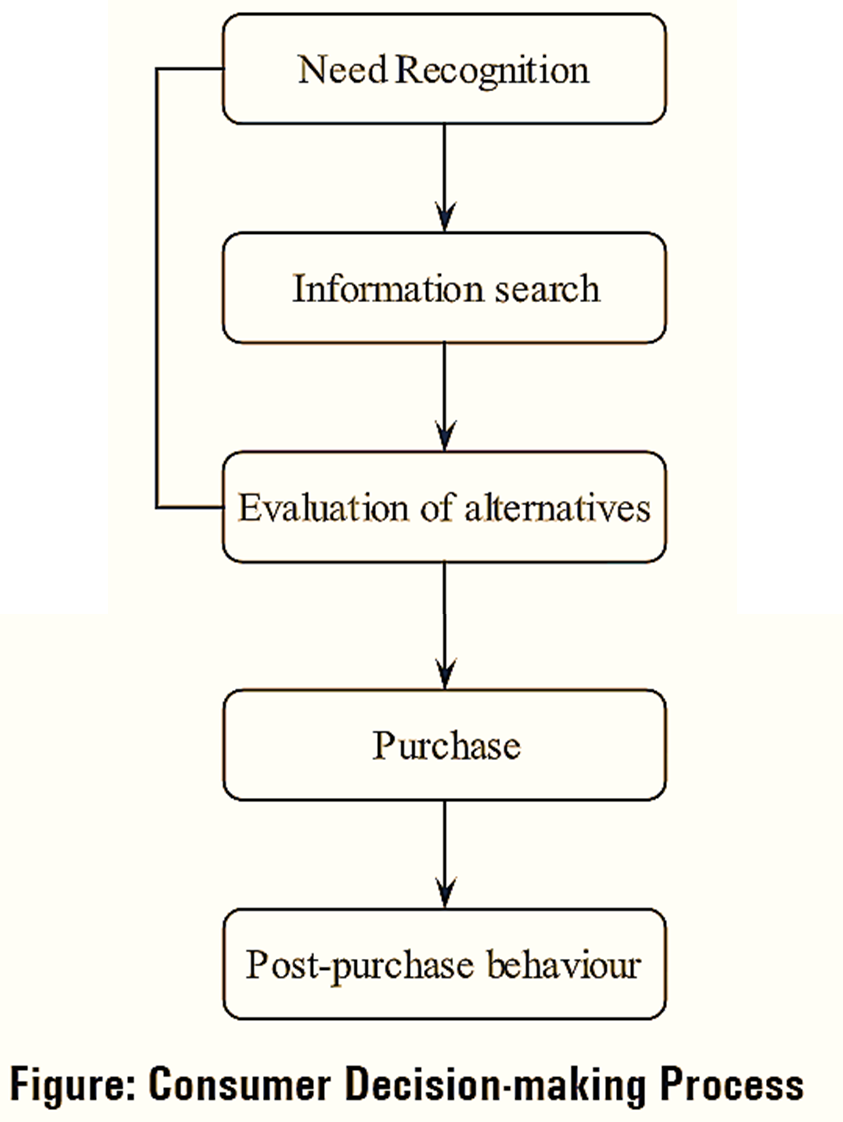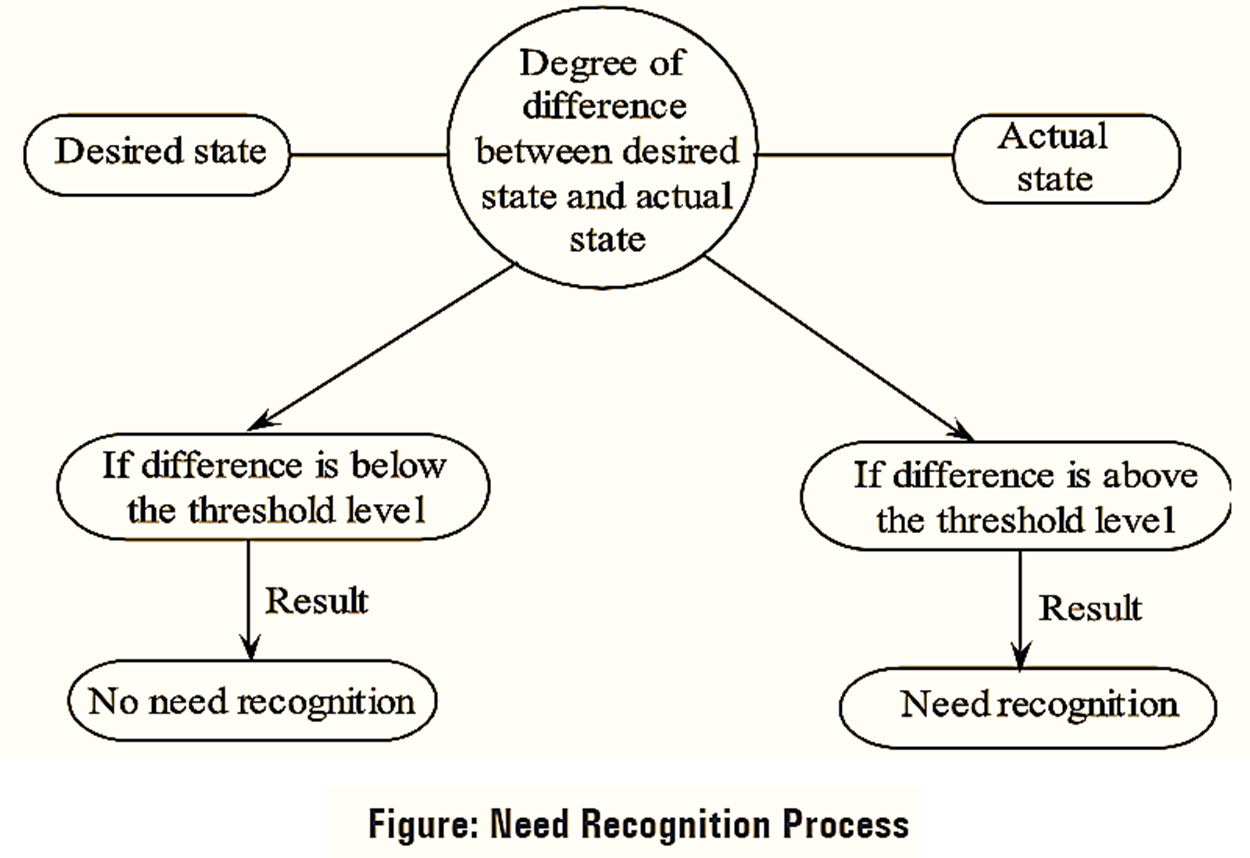The following figure depicts the various stages involved in the consumer decision-making process,

Stage 1: Need Recognition
Need recognition is the first stage in the pre-purchase process of consumer decision making. It relays upon the degree of dissimilarity/ difference existing between the actual state and desired state. Actual state refers to present situation/condition of a consumer and desired state refers to expected situation the consumer desire to be in. A need is recognized when difference between actual state and desired state exceeds or meets some level. No need is recognized when difference between actual state and desired state is below the prespecified or threshold level. If the difference between the actual state and desired state of consumer meets or exceeds threshold level then need recognition occurs.
The following figure depicts ‘The Need Recognition Process’.

Stage 2: Information Search
After determining/identifying the problems, it is necessary to conduct an information search on different dimensions. Based on the information search, a consumer can take proper decisions regarding the purchase of a product/brand. This will leads to marketing the goods and services or sales of the products.
Information may be either passive or active. In passive information search the consumer will obtain information from the advertisements of the product or internal search process where an active information search furnishes reliable information from different sources. A consumer can also obtain information from his/ her personal sources such as friends, family or co-workers.
Stage 3: Evaluation of Alternatives
Before purchasing a product, consumers evaluate alterative choices available in the market and this evaluation is known as ‘pre-purchase evaluation’. The product purchase decision of consumer relys upon the pre-purchase evaluation.
Like in the search stage of decision making in pre-purchase evaluation process various decisions are taken for instance. Whether all the alternatives available in the market, should such alternative be considered or only some alternatives should be considered? How to evaluate the alternatives which are taken into consideration?
Stage 4: Purchase
In the process of purchase decision making, consumer is involved in taking decision concerning whether to purchase the product or not, where to purchase, when to purchase, what to purchase and finally how to make payment for the purchases made.
Stage 5: Post-Purchase Behaviour
Post purchase behaviour refers to the behaviour of consumer which occurs after purchasing a product. The post-purchase behaviour of consumer can be understand by examining the following concepts,
- Consumption
- Post-purchase Evaluation
- Post-purchase dissonance/cognitive dissonance.